ESCRT, not intralumenal fragments, sorts ubiquitinated vacuole membrane proteins for degradation
- PMID: 34047770
- PMCID: PMC8167898
- DOI: 10.1083/jcb.202012104
ESCRT, not intralumenal fragments, sorts ubiquitinated vacuole membrane proteins for degradation
Abstract
The lysosome (or vacuole in fungi and plants) is an essential organelle for nutrient sensing and cellular homeostasis. In response to environmental stresses such as starvation, the yeast vacuole can adjust its membrane composition by selectively internalizing membrane proteins into the lumen for degradation. Regarding the selective internalization mechanism, two competing models have been proposed. One model suggests that the ESCRT machinery is responsible for the sorting. In contrast, the ESCRT-independent intralumenal fragment (ILF) pathway proposes that the fragment generated by homotypic vacuole fusion is responsible for the sorting. Here, we applied a microfluidics-based imaging method to capture the complete degradation process in vivo. Combining live-cell imaging with a synchronized ubiquitination system, we demonstrated that ILF cargoes are not degraded through intralumenal fragments. Instead, ESCRTs function on the vacuole membrane to sort them into the lumen for degradation. We further discussed challenges in reconstituting vacuole membrane protein degradation.
© 2021 Yang et al.
Figures
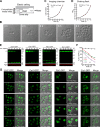
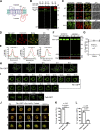
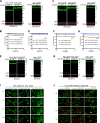

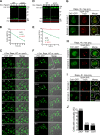
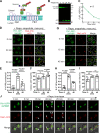




Comment in
-
How the vacuole ESCRTs its own proteins to their final destination.J Cell Biol. 2021 Aug 2;220(8):e202105177. doi: 10.1083/jcb.202105177. Epub 2021 Jul 19. J Cell Biol. 2021. PMID: 34279549 Free PMC article.
Similar articles
-
The intralumenal fragment pathway mediates ESCRT-independent surface transporter down-regulation.Nat Commun. 2018 Dec 18;9(1):5358. doi: 10.1038/s41467-018-07734-5. Nat Commun. 2018. PMID: 30560896 Free PMC article.
-
ESCRTs function directly on the lysosome membrane to downregulate ubiquitinated lysosomal membrane proteins.Elife. 2017 Jun 29;6:e26403. doi: 10.7554/eLife.26403. Elife. 2017. PMID: 28661397 Free PMC article.
-
Ubiquitin-dependent lysosomal membrane protein sorting and degradation.Mol Cell. 2015 Feb 5;57(3):467-78. doi: 10.1016/j.molcel.2014.12.012. Epub 2015 Jan 22. Mol Cell. 2015. PMID: 25620559
-
ESCRT and Membrane Protein Ubiquitination.Prog Mol Subcell Biol. 2018;57:107-135. doi: 10.1007/978-3-319-96704-2_4. Prog Mol Subcell Biol. 2018. PMID: 30097773 Review.
-
The vacuolar shapes of ageing: From function to morphology.Biochim Biophys Acta Mol Cell Res. 2019 May;1866(5):957-970. doi: 10.1016/j.bbamcr.2019.02.011. Epub 2019 Feb 21. Biochim Biophys Acta Mol Cell Res. 2019. PMID: 30796938 Review.
Cited by
-
GCAF(TMEM251) regulates lysosome biogenesis by activating the mannose-6-phosphate pathway.Nat Commun. 2022 Sep 12;13(1):5351. doi: 10.1038/s41467-022-33025-1. Nat Commun. 2022. PMID: 36096887 Free PMC article.
-
Lysosomal membrane transporter purification and reconstitution for functional studies.Mol Biol Cell. 2024 Mar 1;35(3):ar28. doi: 10.1091/mbc.E23-06-0259. Epub 2023 Dec 20. Mol Biol Cell. 2024. PMID: 38117592 Free PMC article.
-
ESCRT-I fuels lysosomal degradation to restrict TFEB/TFE3 signaling via the Rag-mTORC1 pathway.Life Sci Alliance. 2022 Mar 30;5(7):e202101239. doi: 10.26508/lsa.202101239. Print 2022 Jul. Life Sci Alliance. 2022. PMID: 35354596 Free PMC article.
-
2-deoxyglucose transiently inhibits yeast AMPK signaling and triggers glucose transporter endocytosis, potentiating the drug toxicity.PLoS Genet. 2022 Aug 11;18(8):e1010169. doi: 10.1371/journal.pgen.1010169. eCollection 2022 Aug. PLoS Genet. 2022. PMID: 35951639 Free PMC article.
-
Mitophagy in yeast: known unknowns and unknown unknowns.Biochem J. 2023 Oct 31;480(20):1639-1657. doi: 10.1042/BCJ20230279. Biochem J. 2023. PMID: 37850532 Free PMC article. Review.
References
-
- Adell, M.A.Y., Migliano S.M., Upadhyayula S., Bykov Y.S., Sprenger S., Pakdel M., Vogel G.F., Jih G., Skillern W., Behrouzi R., et al. . 2017. Recruitment dynamics of ESCRT-III and Vps4 to endosomes and implications for reverse membrane budding. eLife. 6:e31652. 10.7554/eLife.31652 - DOI - PMC - PubMed
Publication types
MeSH terms
Substances
Grants and funding
LinkOut - more resources
Full Text Sources
Other Literature Sources
Molecular Biology Databases

